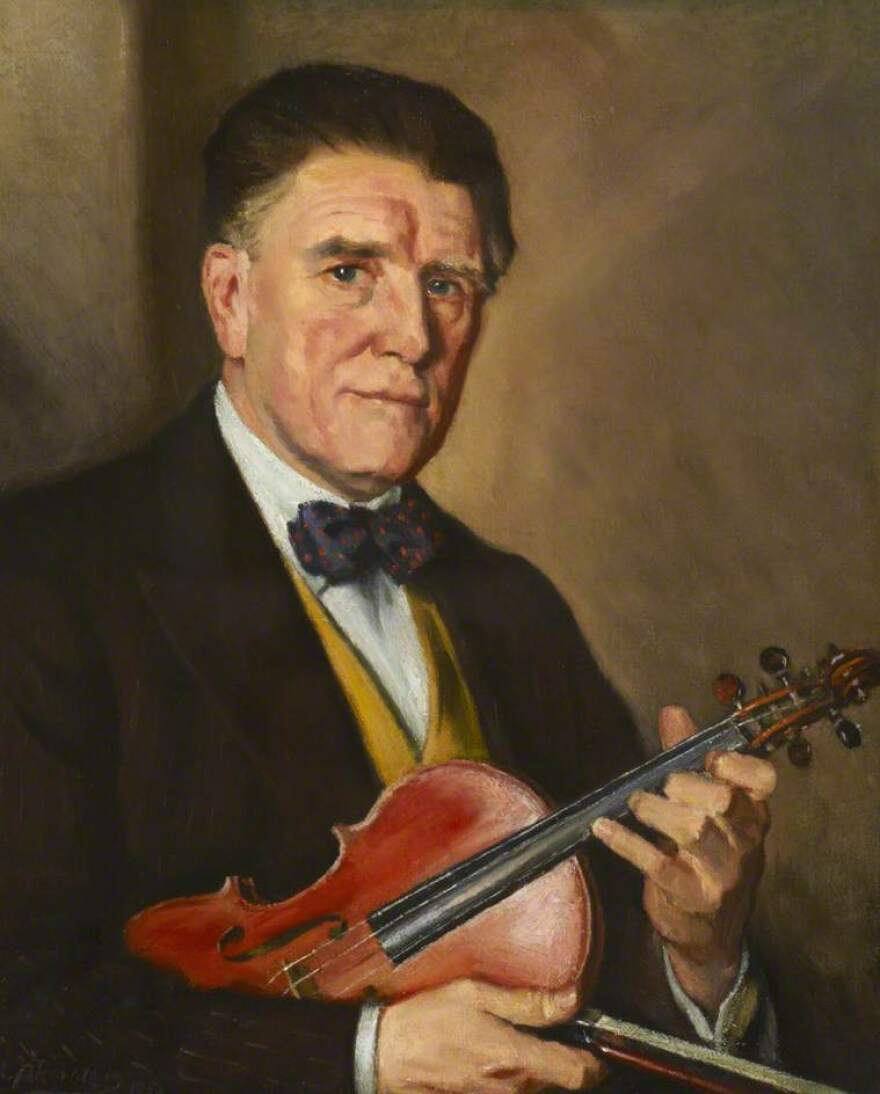Photo: A portrait of English violinist Albert Sammons.
Edward Elgar's Violin Sonata was one of three chamber works Elgar composed more or less concurrently towards the end of the First World War at Brinkwells, the country cottage the Elgars had rented near Fittleworth in Sussex. Although he had begun work on the String Quartet before the sonata, he completed the sonata first. Elgar was himself a competent player of both the violin and the piano and the work proceeded quickly to completion in little over a month.
Ralph Vaughan Williams' Violin Sonata (1952) is his last major chamber work and his most neglected one. In three movements, it lasts nearly half an hour. The opening Fantasia is full of nervous energy and virtuosic violin writing. Calm alternates with passages of faster, more dissonant music. There is something ironic about the scherzo, like the clown with a grim secret, and it is this which makes it so powerful. The theme of the final movement is taken from the piano quintet of fifty years earlier. It a gentle, memorable tune on which VW composes variations. This is a fine work and should be much better known.
Frederick Delius' health was recovering in 1924 when he began his 3rd sonata for violin and piano. But his illnesses returned and he had to lay the work aside, presumably forever. However he was able to return to his composition after the young Yorkshireman Eric Fenby arrived as his assistant. The sonata was finished in 1930.
We'll hear these compositions on the next An English Pastorale, Sunday at 9 am.

